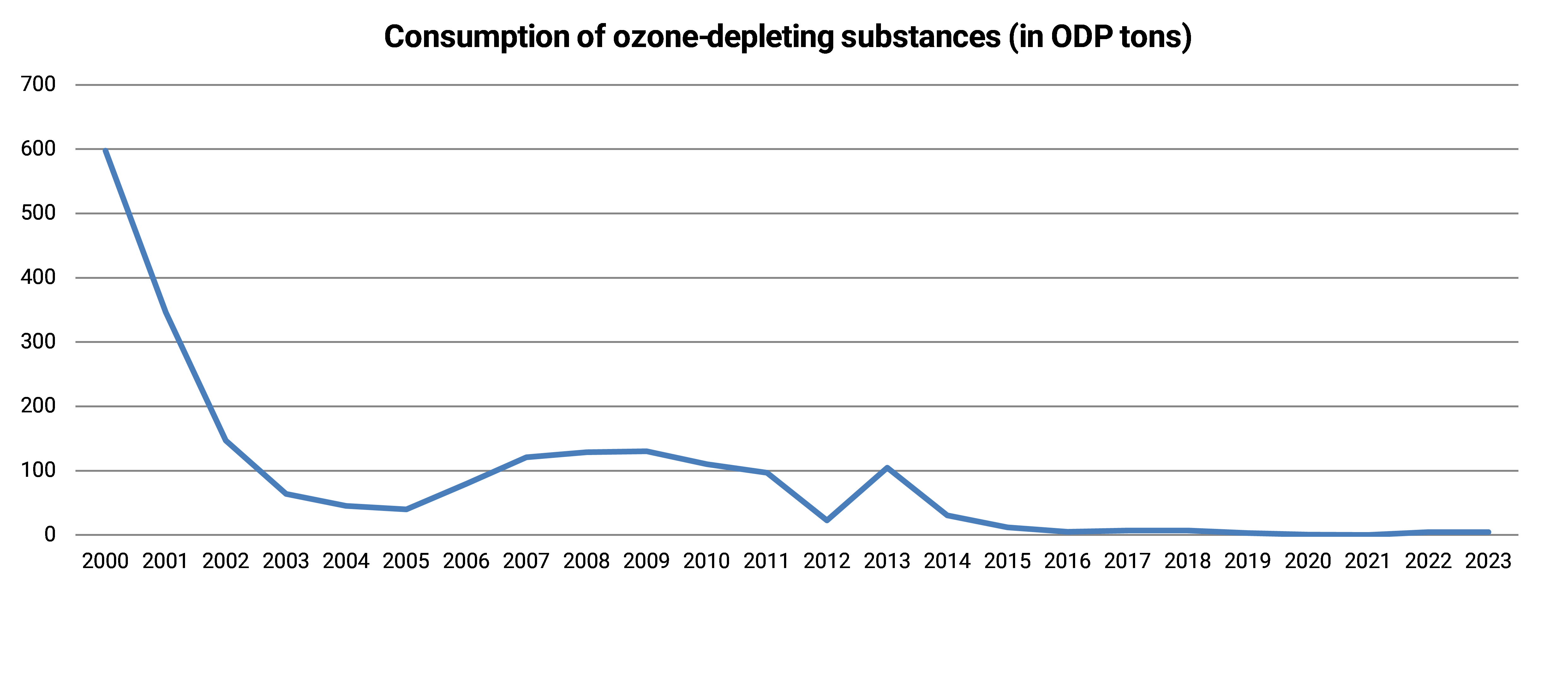Brief description:
The stratospheric ozone layer is the most important component of the Earth's atmosphere. It protects the human, animal and plant world from damage by short-wave ultraviolet (UV) radiation. Ozone is destroyed as a result of reactions with some ODS when exposed to UV radiation. Compounds that strongly Deplete the ozone layer include chlorofluorocarbons (CFCs), carbon tetrachloride, methyl chloroform, halons, hydrochlorofluorocarbons (HCFCs), hydrobromofluorocarbons (HBFCs) and methyl bromide. They are used as solvents, refrigerants, foaming and degreasing agents, aerosol removers, in fire extinguishers (halons) and agricultural pesticides (methyl bromide). The extent to which ODS affect the ozone layer depends on their chemical characteristics.
The indicator determines the amount of ozone-depleting substances (ODS), and indicates aggregated ozone-depleting capacities
Methodology:
The indicator is formed in accordance with the "Methodology for the formation of environmental statistics indicators" approved by Order No. 223 of the Acting Chairman of the Statistics Committee of the Ministry of National Economy of the Republic of Kazakhstan dated December 25, 2015.
The responsible authority for generating data on the Consumption of Ozone Depleting Substances is the Climate Change Coordination Center. Information is based on data of the state revenue Committee of the Republic of Kazakhstan, Committee for environmental regulation and control of the Ministry of ecology and natural resources of Kazakhstan and these companies (periodicity - annual).
